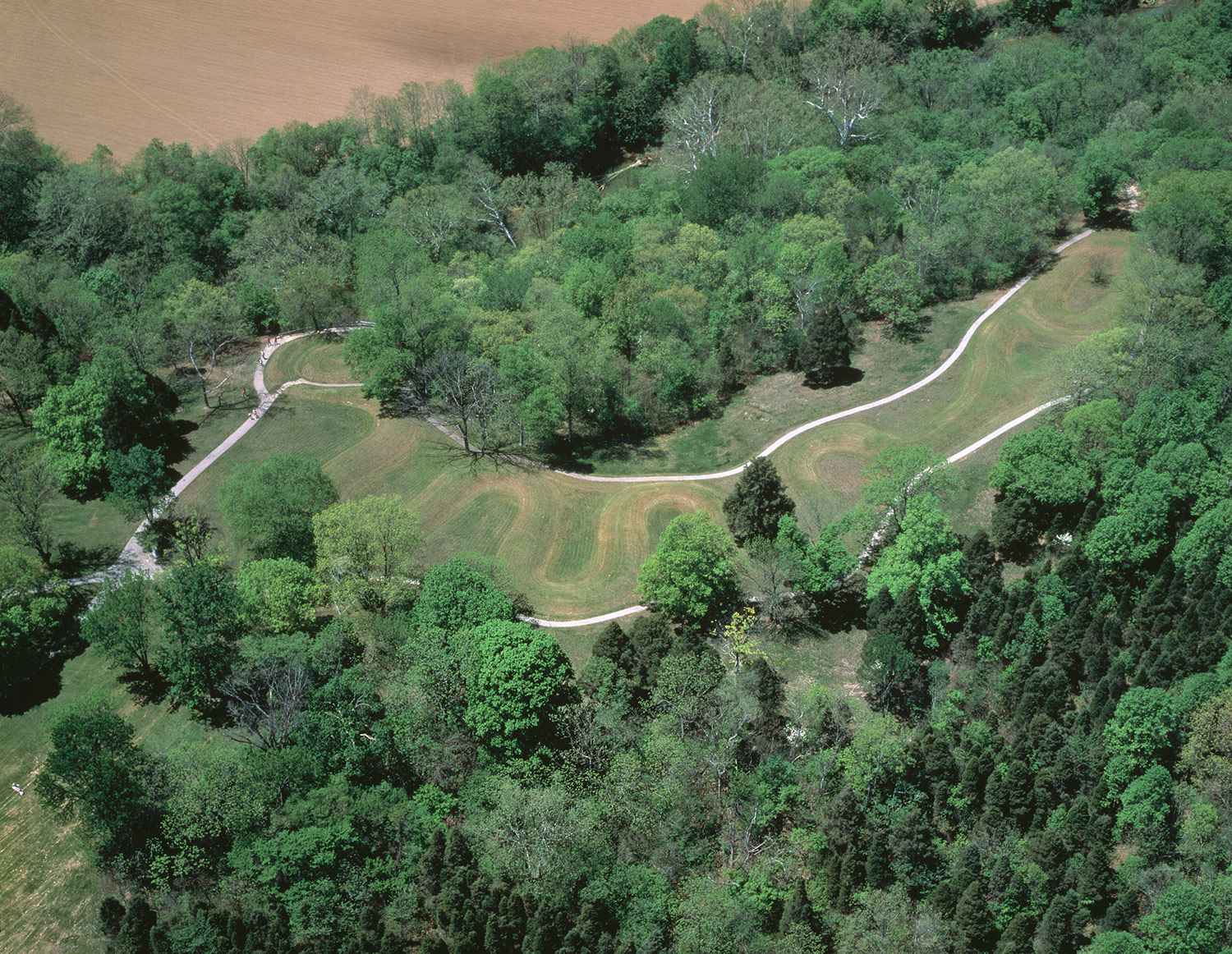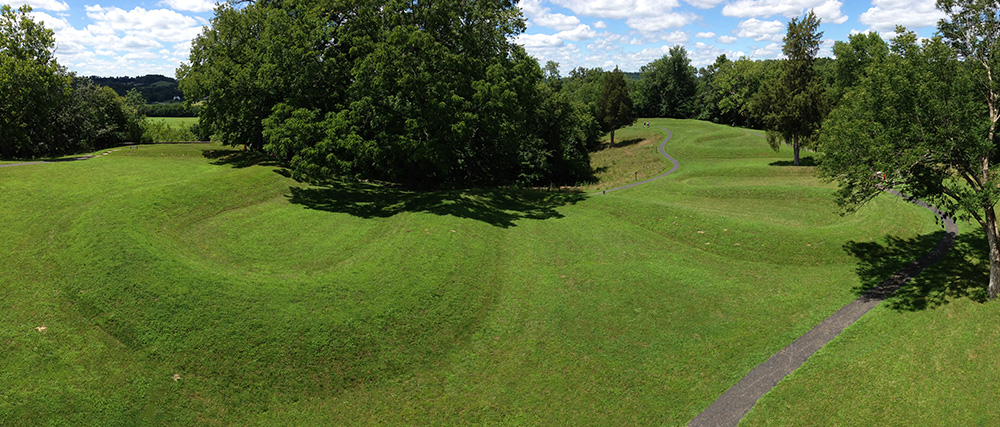Great Serpent Mound
Adams County, southern Ohio. Mississippian (Eastern Woodlands). c. 1070 C.E. Earthwork/effigy mound
Complete Identification:
Great Serpent Mound
Unknown artists
Earthwork/effigy mound
c. 1070 C.E.
Adams County, Ohio (created by Fort Ancient peoples of the Middle Ohio River Valley)
Remains in original location.
Function:
Snakes, which were seen to have supernatural powers, were often incorporated into spiritual rituals.
The astrological alignment of the serpent—the head aligns with the summer solstice sunset and the tail with the winter solstice sunrise—suggests that it was used to mark the seasons. Similarly, the curves in the serpent’s body may follow lunar phases or equinoxes.
It’s possible that the snake is swallowing the ovoid shape at its head, which could represent the sun. Perhaps the swallowing of the sun was meant to document a solar eclipse.
The direction of the (North) Pole Star aligns with the first curve of the serpent from its head; thus the serpent may have served as a natural compass. It also may have represented the constellation Draco, which included the Pole Star.
Created around the same time that Haley’s Comet appeared—may have marked this astronomical event.
Although burial sites from the earlier Adena culture nearby indicate a possible burial purpose for the serpent, no archaeological evidence suggests this.
Scholarly debate over the mound’s purpose (clearly) continues.
Context:
Created by Native American tribes (primarily the Fort Ancient culture) who lived in the valleys of the Ohio, Missouri, Mississippi, and Illinois rivers before settlers of European descent came to the region in the 19th century.
The people who made this mound lived in settled agrarian communities; farmed squash, maize, and beans (the “three sister” crops); had a stratified social hierarchy with a large labor force, and did not leave behind written records.
Effigy mounds of animal figures were common creations of the tribes of the Upper Midwest; however, many of these mounds were destroyed by the plows of European settlers.
Many of these cultures believed snakes to have supernatural powers; tribes of the Middle Ohio Valley frequently made copper serpentine figures as well.
Geography: the mound follows the topography of a high plateau over Ohio Brush Creek—the serpent’s head points to a cliff overlooking the creek. It’s speculated that the plateau’s lizard like shape evoked (and inspired?) the creation of the serpent.
Geology: a meteor struck the site 250-300 mya, creating folded bedrock.
The Fort Ancient peoples lived in densely populated agrarian villages of 100-500 residents, composed of circular or rectangular houses surrounding an open plaza.
In addition to agriculture, some members seasonally lived and traveled in hunting groups, supplementing their diet with deer, elk, turkey, bear, small game, nuts, fruits, and berries.
During this period (after 1000 A.D.), the culture shifted from making burial mounds to cemeteries surrounded by trash and storage pits.
The Fort Ancient culture lived contemporaneously alongside the Mississippian culture, which built Cahokia and heavily emphasized the theme of the rattlesnake. It’s possible that this serpent mound is a testament to the influence of the Mississippian rattlesnake-worshipping practices.
Some scholars consider the Fort Ancient culture just to be an offshoot of the Mississippian culture.
Perhaps the mound is just a restoration/refurbishment of an earlier mound made by the Adena culture (c.1100 B.C.E.-200 C.E.) or the Hopewell culture (c. 100 B.C.E.-550 C.E.).
Form:
Dirt
Snake effigy mound, the largest one in the world, over 1300 feet long. An average height of 4-5 feet and an average width of 20-25 feet.
Thought to possibly be a rattlesnake
Depicts a snake with three curves and a tail ending in a spiral that appears to b swallowing a circular shape.
The mound conforms to the natural topography of the area
The head faces east and the tail faces west
Head aligns with summer solstice sunset
Tail points to the winter solstice sunrise.
Erected c. 1070, although the construction date is entirely speculation and no one, is completely certain of it
Is a national historic landmark
Content:
A snake, slightly crescent-shaped
With the snake’s head to the east and the tail to the west
The ovoid shape at the eastern end of the serpent is thought to be its head, eye, or possibly an egg or even the sun that the snake is swallowing (representing a solar eclipse?)
Depicts a large snake, possibly a rattlesnake
Many Native American cultures east of the Mississippi believed the snake to be a powerful deity of the underworld.
Vocabulary:
Effigy: a model or sculpture
Cross-cultural comparisons:
Stonehenge
Aligning different parts of the structure with solstice/ equinox and connection to celestial cycles.
Both very large structures that would have required an organized plan and innovative methods to be made.
Apollo 11 stones
Are both very basic depictions of animals (detail wise)
Both have very ambiguous and unknown meanings
Themes:
Display
Power-authority; images of the Divine
Animals in art
Myth
Sacred Spaces
Sources:
https://www.ohiohistory.org/visit/museum-and-site-locator/serpent-mound
https://www.fortancient.org/archaeology/ohio-pre-history?showall=&start=5





